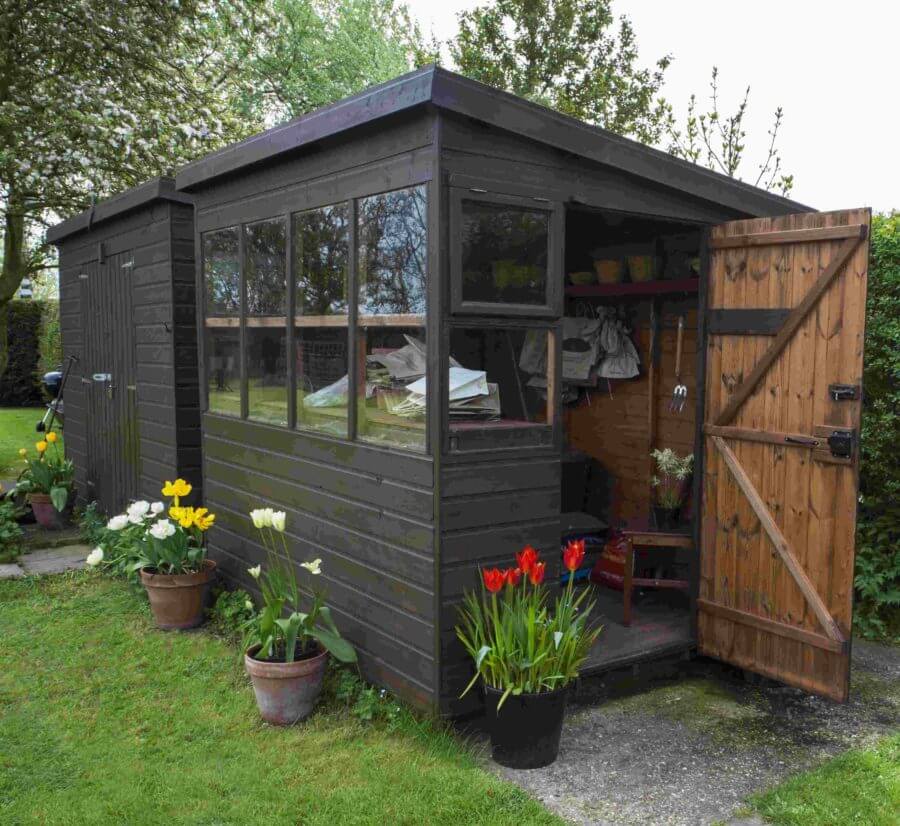

9 Tips for Downsizing: How to Downsize for a Move
Posted in How-to on August 31, 2021
If one of your greatest concerns these days is how to downsize for a move since you are in the middle of organizing a long-distance relocation, don’t panic! We’ve prepared the ultimate list of tips to follow that will help you to organize the whole process. Here is how to set up a packing strategy to minimize your household inventory and keep the costs low.
Are you relocating to a new home and feel anxious about moving out? If so, this is completely understandable! Facing all the tasks related to relocation and a strict timeline can stress you out. However, avoiding the most common relocation mistakes and not wasting your precious time is possible with a proper strategy! Here is how to move efficiently and quickly decide on what to get rid of without the risk of cluttering your new home.
How Do You Prepare to Downsize for a Move?
Since the number of items on your household inventory list affects the total cost of relocation, downsizing the household is a must. Not only will you be able to control costs this way, but also to organize your move more efficiently, without the risk of cluttering the new living space. However, downsizing can be very difficult, especially when you start dealing with pieces that have sentimental value.
People are just prone to relate a specific item to a memory or feeling, and when this happens, getting rid of belongings can be a pretty stressful experience. If you’re wondering How do I start decluttering to move, here are a few useful tips to support your efforts in deciding what to keep and create a decision-making strategy based on rational principles.

Tip #1: The Best Time to Start Decluttering Is Three Months Before Cross-Country Moving
The best moment to start cutting down on your household inventory is as soon as you schedule the relocation date. In the perfect scenario, the whole process should be initiated at least three months in advance of your desired relocation date.
This period of time should be enough to set up an effective decision-making system that will help you determine more easily what stuff to get rid of and what to keep. Also, all this should help you prepare emotionally for the move as well, because it will mark the next big chapter in your life. So, when organizing your move, the number one rule is to start early!
Tip #2: The Storage Areas You Rarely Use Should Be the First on the List for Downsizing
If you feel like there is no house big enough to store all the possessions you have, it’s most likely that you have plenty of storage areas in your home. And this is exactly where you should start when trying to declutter your house.
How Do You Downsize Things? Think of Their Use-Value at the New Place!
Garages, attics, basements – all those storage areas hide hundreds of unnecessary things. Old-fashioned clothes, sundries you’ve put in storage – just in case, or because you weren’t ready to get rid of them, should finally be disposed of. This is especially true if you are relocating from a house to an apartment, where you’ll have considerably less space to use for storage.
So before putting your gardening tools on the new apartment checklist, determine whether those will have use value in your future place. Before you pack anything, try to envision it in the house you’re relocating to and think of small apartment ideas to use your space smartly.

Tip #3: Follow a General Rule for Sorting Things – Keep, Donate, Sell, Throw Away
To make the decision-making process easier, ensure to form four basic categories for dividing things. Once you sort them out this way, you’ll know what to do next – keep them and pack, donate them to charities, sell at a garage sale, or simply throw them away.
Dedicating four cardboard boxes and labeling them with those categories will be the best and simplest way to organize the process.

Tip #4: How to Downsize When Moving? Identify the Categories for Sorting Out
For many people, sorting based on categories is the simplest way to deal with this overwhelming process. Here is how to downsize a home without failing to check any essential category!
Clothes, Footwear, Fashion Accessories
Clothes, footwear, and other fashion accessories are probably the most critical spot of every relocation. Sometimes, overfilled closets can take days, or even weeks to get into order and determine what to box up. However, undoubtedly the best way to pack clothes is to sort out all the pieces first and get rid of all unnecessary garments.
Medicines, Cosmetic Products, and Makeup
Instead of automatically packing all the medicines, cosmetics, and makeup, make sure to check the expiration dates and recycle everything that is not safe to use anymore. There are disposal centers all across the country, so check out the local ones and discard all these products in a safe manner.
Go Through Documents and Important Papers and Create Order
Believe it or not, one of the most common things people forget to do when they move is to pack their documents. To avoid this crucial mistake, ensure to organize important documents at home and sort out the essentials you will definitely need like medical records, IDs, tax records, your kids’ schools records, and anything you find important to be on the packing list. However, magazines, subscriptions, expired warranties, even some bills shouldn’t make it to the truck since there is no point in having them.
Sentimental Items: Decorations, Souvenirs, Kid’s Toys, and Similar Stuff
And here comes the toughest part. Sorting out memories is always difficult. The gifts your loved ones gave you, souvenirs that remind you of great travels, your kid’s first toys, and the like are all priceless treasures. However, keeping all of them is simply impossible, because as the years pass, the number of them will keep increasing.
To ease the process of saying goodbye to this stuff, give away things like toys to your neighbor’s kids or charities. You can also take pictures of every item and create a digital collection. This way, you’ll match two non-joinable things – having hundreds of memories and a home in perfect order!

Tip #5: Decide What You Will Do With Bulky Items Like Furniture or Kitchen Appliances
Excluding bulky stuff from your inventory list will definitely reduce the total cost of the relocation. So when deciding whether to take them or not, always consider how it will affect your finances. Furniture pieces, refrigerators, and stoves won’t only make your inventory list longer, but they also require special packing techniques, which may increase the price. For that reason, determining what to do with them is of essential importance.

Tip #6: Create a Pack and No-Pack Zone in the House
The creation of packing and no packing zones in the home is one of the best organizational hacks we can give you. This way, you’ll be able to avoid any unnecessary mess and follow the progress more easily. Also, you will know exactly what should be loaded in the truck without mixing things up.
Furthermore, this is one of the most effective techniques to prepare for movers and provide them with enough space to move freely through the household. If the halls are cluttered with boxes, not only will they work more slowly, but they will also be in great danger of injuries since handling heavy stuff will be much tougher in these conditions.

Tip #7: How to Downsize for a Move? Find Charities to Donate Excess Stuff or Sell them at a Garage Sale
One of the ultimate goals of all those who intend to move across the country is to save on relocation costs. Getting rid of all redundant stuff and cutting the inventory list short will definitely help you meet this goal. Moreover, if you decide to donate some of those possessions to people in need, the effect of a good deed will be another benefit you get. Explore your local charities and whether they accept donations of furniture, clothes, linens, food, even kitchen appliances, electronics, toys, or books – give those belongings a second chance. Plus, these donations might be tax-deductible.
Make Some Extra Money by Selling the Stuff at the Best Garage Sale Your Neighbors Have Ever Seen!
If you want to expand your relocation budget and give yourself some extra room to breathe, then sell the belongings that are still in good condition, and you can get a good price for them. To explore some useful tips on how to organize a successful garage sale, make sure to take a look at the video below.
Tip #8: Involve Family Members in the Decluttering Process
If you’re relocating with a family, make sure everybody gets their piece of cake when it comes to tasks. When relocating the household, taking care of the whole process is simply impossible to do without some kind of support. Of course, if your kids are too young to take the responsibility of boxing up their room, you will share those tasks with your partner or closest family members.
In case that your children are already teenagers, then tasking them with getting their room into order and minimizing the number of belongings is definitely a good idea. Not only will this shorten your relocation to-do list, but it will be a perfect lesson on responsibility. Also, this is just an ideal opportunity to advocate for conscious spending and a minimalist lifestyle, which is the only way to avoid hoarding and cluttering.

Tip #9: Learn What Items Movers Won’t Move and Exclude It From the Packing List
One of the best relocation tips when it comes to moving cross country is to explore all the regulations related to the transportation of different items into the state you’re relocating to. Since every state has its own laws regarding certain plants and pets, in some cases, shipping, even with some alternative solution like the USPS, will not be possible. Also, keep in mind that shipping those items requires special conditions due to their delicate nature, and their safety can be at risk.
Aside from pets and plants that professional long-distance movers won’t pack into the moving truck, some other things cannot be included in the packaging list. These include flammable materials, bottles under pressure, and anything else considered hazardous. So to avoid unpleasant surprises on the relocation day, check all the details and prepare accordingly.

Once You Know Which Items You’ll Take to the New Home, Inform the Cross-Country Movers and Ask for the Final Price
As we have already mentioned, the number of belongings on the inventory list affects the final price of the move. So when selecting a company and picking cross-country moving services, ensure to choose a relocation company that will provide you with the most beneficial conditions, especially if you combine a few different services, like packing services along with car shipping.
Also, don’t forget to check if a relocation company is legitimate by using the Federal Motor Carrier Safety Administration’s official website. That is the only way to be entirely sure you haven’t bumped into a relocation scam. Once you set up all these details and finish downsizing your household, the only thing left is to wait for the movers to come and relocate you to your next home.



